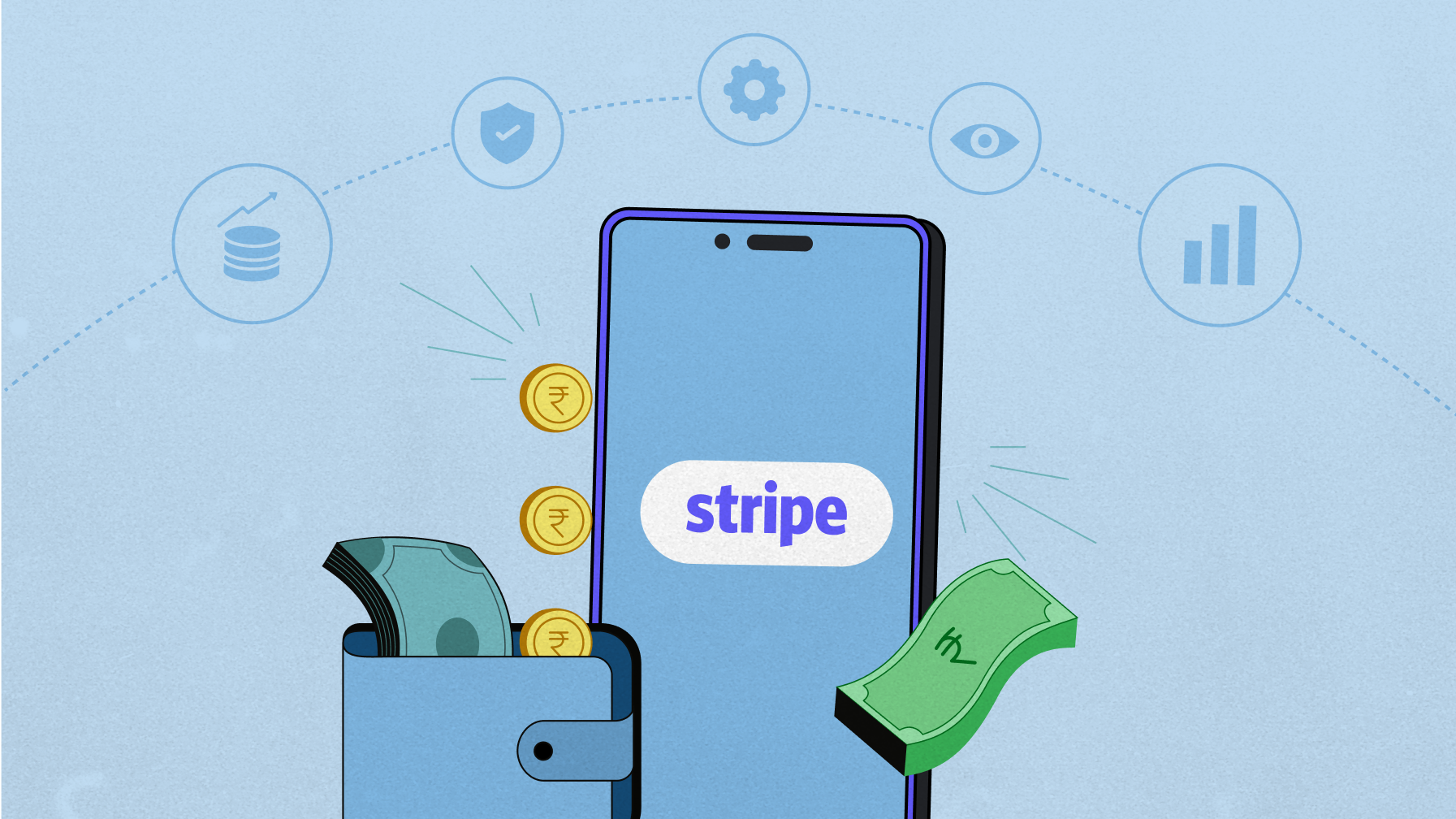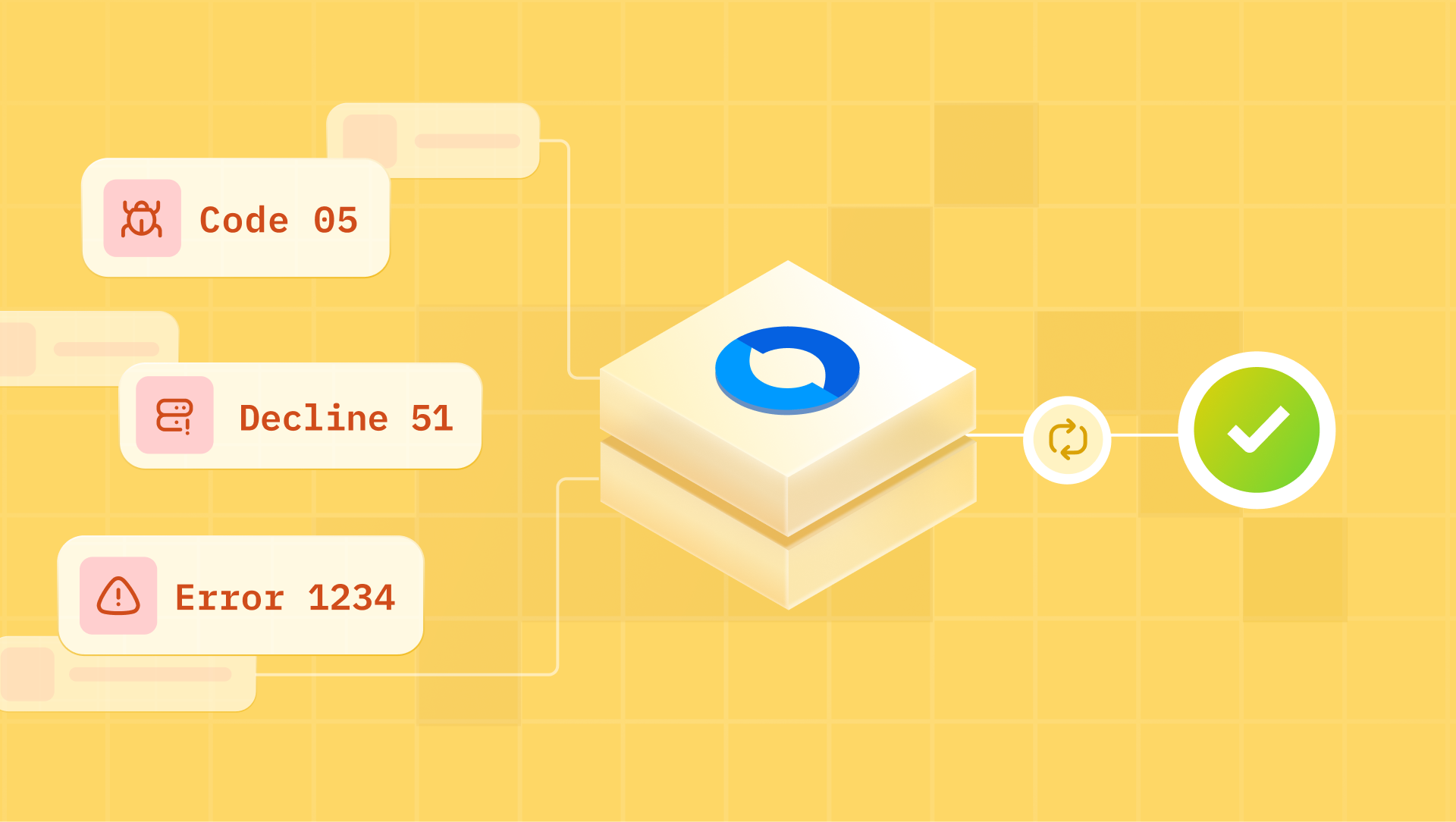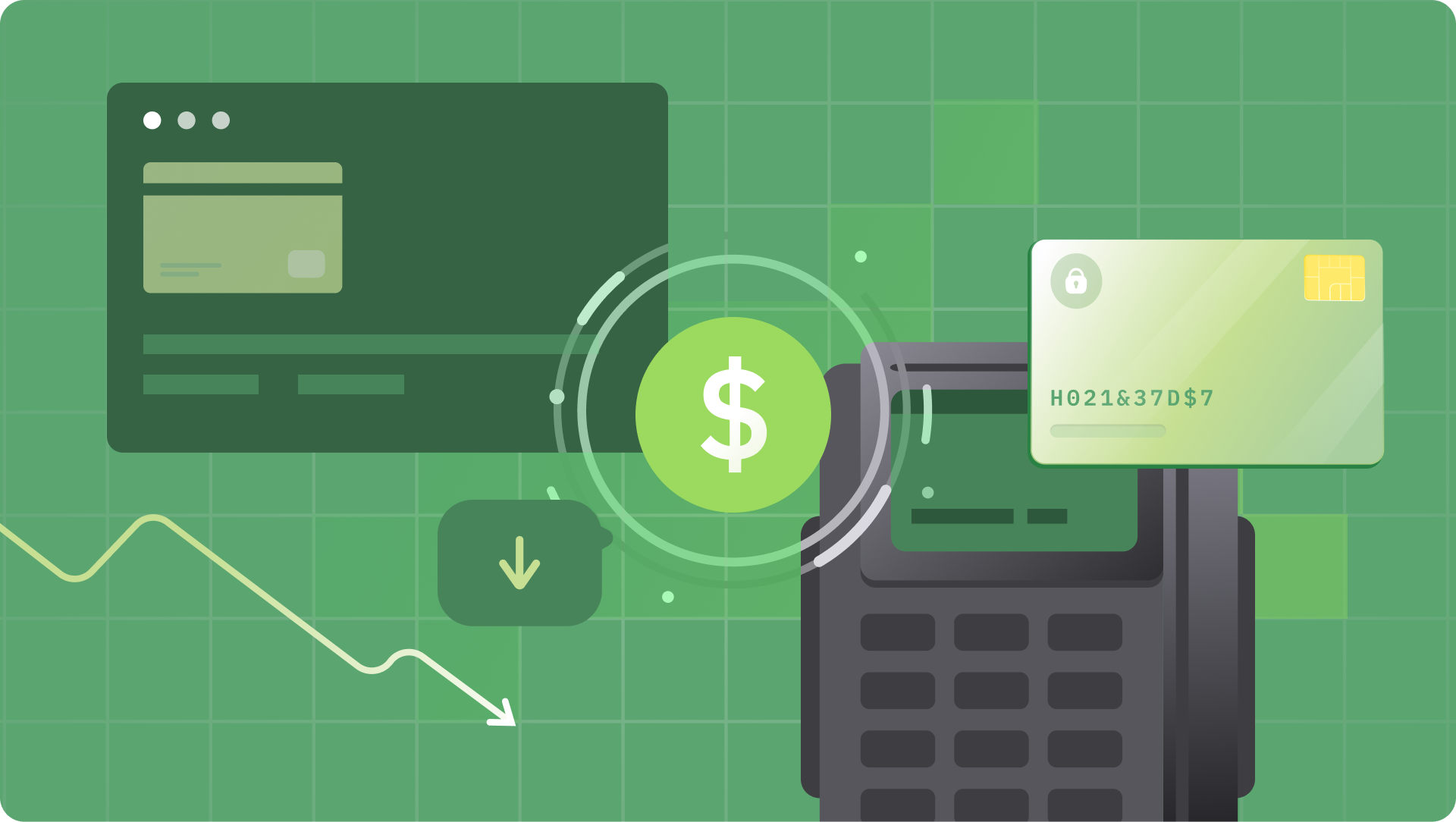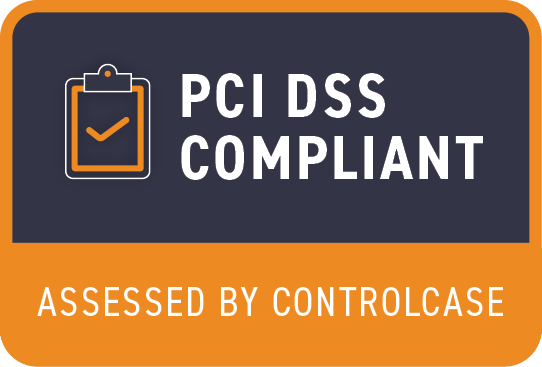Stripe is super easy to integrate, and its pricing appears straightforward. As a result, most businesses get started very quickly on Stripe because everyone loves speed and simplicity !!
On the other hand, one question was pondering us.
Why do many small to medium-sized businesses always keep talking about Stripe fees?
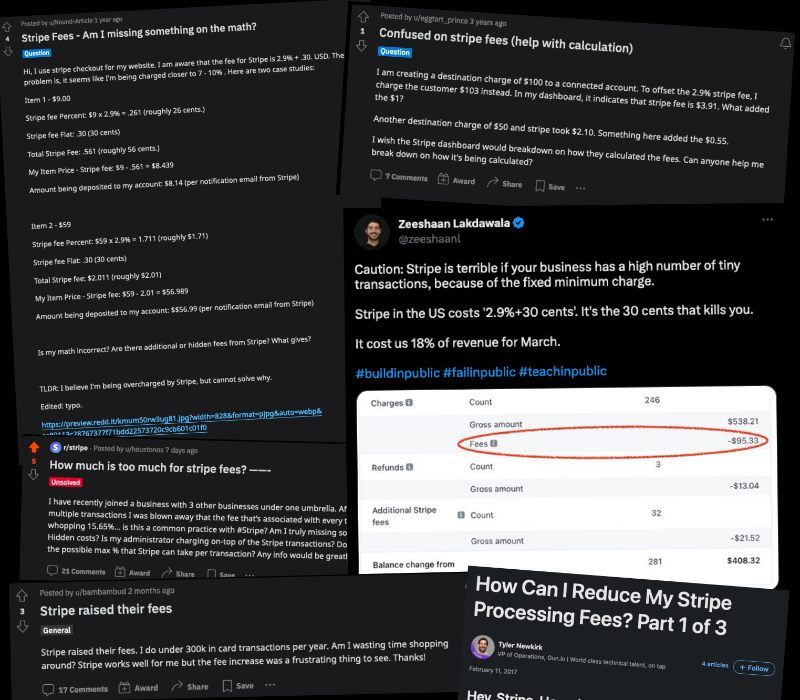
The Problems
While deep-diving a bit, we understood that some of the actual pain points for such businesses were:
Problem 1: Not being able to breakdown fee components of Stripe and attribute it at per transaction level
Problem 2: Lack of visibility on which feature of Stripe is costing more
Problem 3: Not being able to spot the breakeven point to adopt a secondary payment processor
So, we embarked on a journey to find a solution.
The Answers
We started with ChatGPT, but it fell short of our expectations with a massive caveat at the end, while we were looking for something very precise and accurate.
And, Google search was also not of much help. Existing online pricing calculators were not descriptive and deep enough to solve the problem. Surprisingly, most did not venture beyond the primary 2.9% + $0.30 estimation.
How else do we solve this problem?
At this point, we just returned to good old-fashioned spreadsheets to solve the problem hands-on.
- We represented Stripe’s pricing terms for the US market across the most used product offerings of Stripe - Payments, Billing, Radar, Invoicing, Payment Links and Tax.
- Narrowed down on a list of questions for businesses (as inputs)
- For a business processing 1000 monthly transactions with an average transaction value of USD 50. We assumed the business to use 3 main features of Stripe - (a) Payments (b) Billing (c) Tax and (d) Chargeback protection via Radar (refer to notes at the end of this blog for detailed assumptions)
- Estimated the monthly fee paid to Stripe in absolute dollar value, and as a % fee of amount processed. Also added more breakdown of the cost for better visualization.
Shockingly, the business will end up paying 8.97% of revenue to Stripe!
It will badly hit the business, if it operates in a low margin retail business. And while analyzing the breakdown, the insights we got were like below:
- 75% of the Stripe fee was attributed to payment processing and another 20% to the monthly feature subscription fees.
- Tax, Billing and Radar were the top three value-added services contributing to ~25% of the total costs.
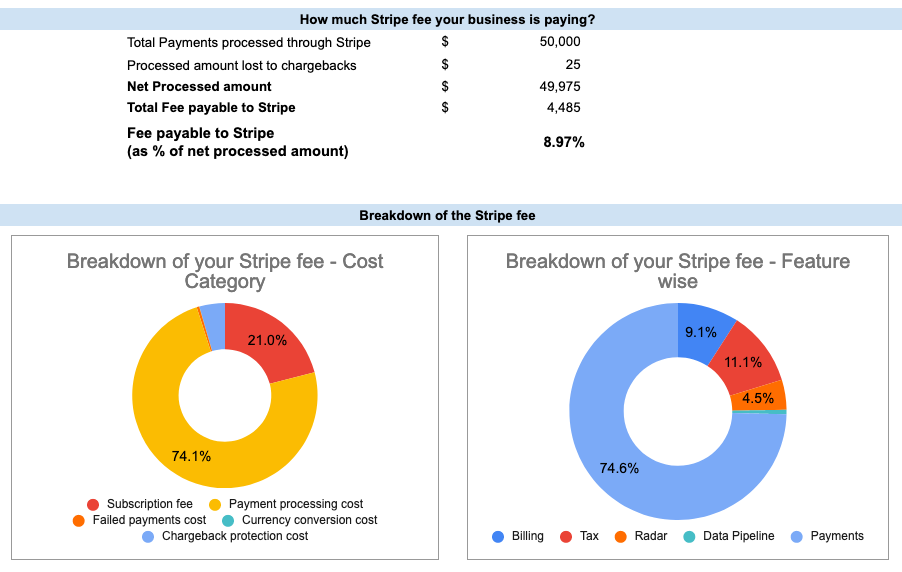
And here is another interesting observation
Let us say there are three online businesses, each processing USD 50,000 per month on Stripe.
- Company A: Processing high transaction volume(5000 transactions), low transaction ticket size($10 per transaction). This could be hyperlocal consumer service or an online transit ticketing service.
- Company B: Processing medium volume(1000 transactions) and medium transaction ticket size($50 per transaction). This could be a e-commerce shopping portal or a digital subscription business.
- Company C: Processing low volume(100 transactions) and high value($500 per transaction). This could be an insurance premium payment portal.

With every other criterion remaining the same (refer to notes at the end of this blog for assumptions), let us see what these businesses might pay as a Stripe fee.
Company A will be paying ~10% more Stripe fee than Company B or Company C
But why?
This is primarily because of two key factors:
Tax feature has a significant cost difference when it comes to the No-code versus API Integration. If only Company A had chosen No-code tax integration, roughly USD 2000 per month could have been saved.
The 30 cents fixed fee per transaction will burn the pockets of Company A much more when compared to the other two.
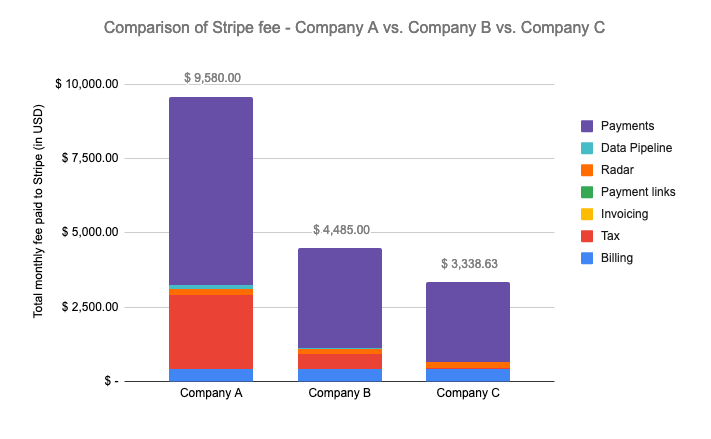
So what should Company A do?
The marginal benefit of sending more transactions to the same payment processor is almost insignificant. For example, let's consider that Company A scaled from 5000 to 100,000 transactions per month. But still, Company A will be paying 19.15%, whereas Company C processing the equivalent amount will pay 6.66% only. Company C enjoys better marginal benefit by sending more transactions to the same processor.
If you are like Company A, you may not get significant economies-of-scale benefits from Stripe's Standard pricing
So, look forward to either of these approaches.
Option 1: Negotiate for a Custom Pricing from Day 1
Option 2: Start hunting for a secondary payment processor with lower fixed fees per transaction. Your primary focus should be on negotiating two aspects:
- The 30 cents fixed fee per transaction (and not the % fees) because that is where you will be shelling out more.
- Pricing of value-added services (such as Tax, Billing). Saving on value-added services (especially the services which are fixed fee-based) will be more impactful than negotiating the primary % fees per transaction.
How much will Stripe cost your business?
Do you wish to run a similar analysis for your business, tweaking transaction value, volume and 20 more parameters (which influence your cost)?
Here's the model we used for calculations. If you have any questions, please join our public slack channel and feel free to ask any queries on our public slack channel. Alternatively you can write to us at hyperswitch@juspay.in.
We are open and happy to hear feedback to extend this pricing calculator to more countries other than the US and more use cases like Payouts, Terminal, Stripe Connect, Stripe Atlas, Stripe Sigma, etc.
By the way, we have still not addressed Problem 3 - "Not being able to spot the breakeven point to adopt a secondary payment processor". It will be covered in our next post. Based on your interest and feedback, we are open to extend the calculator with more updates on how the fee varies across other features of Stripe, which may impact your business and how you can navigate it.
And there’s more…
Before choosing a secondary payment processor, you should invest in building a payment stack that has cost savings associated with it. We wish to demystify that as well.
So, please stay tuned for our next post - "Why your CFO will love Hyperswitch", coming soon!!
Disclaimer:
This is an unbiased opinion and analysis made based on the publicly available "Standard Pricing" of Stripe published for the US market. This post does not intend to recommend or discourage the usage of Stripe. Instead, this is an initiative to help businesses make informed decisions with transparency.
We are open to community feedback or any corrections proposed to the tool. Please write an email to hyperswitch@juspay.in or drop a comment on this post.
Notes - Assumptions for the above analysis:
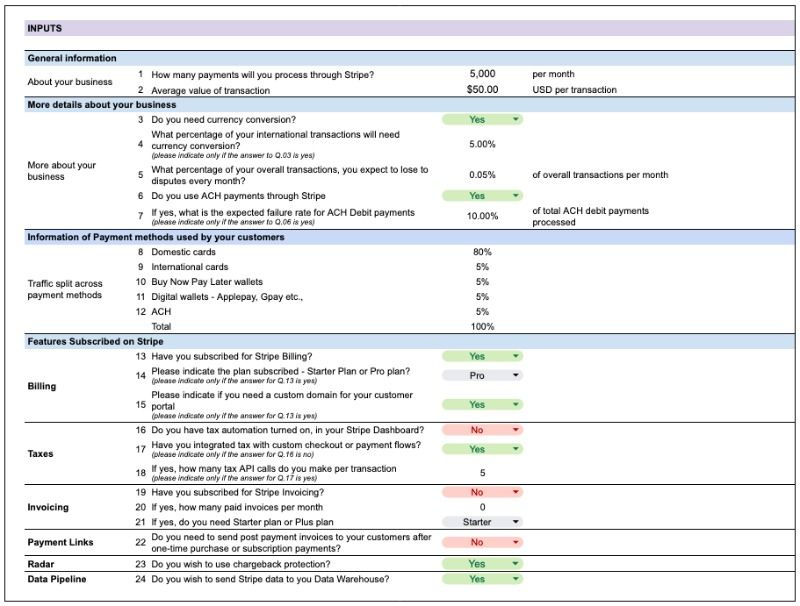
References
https://stripe.com/pricing/local-payment-methods
https://stripe.com/billing/pricing
https://stripe.com/pricing#faqs
https://stripe.com/tax#pricing
https://stripe.com/invoicing/pricing
https://stripe.com/sigma#pricing
https://support.stripe.com/questions/chargeback-protection-limits
https://support.stripe.com/questions/dispute-fees-faq
Some interesting stories on Stripe fee negotiation:

